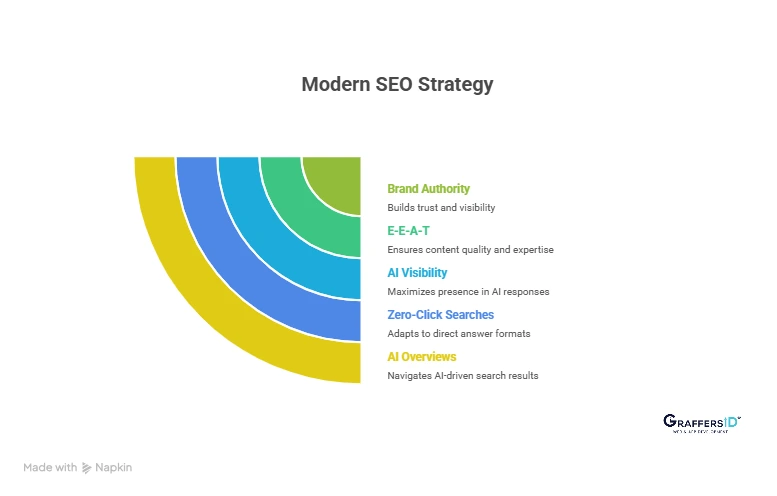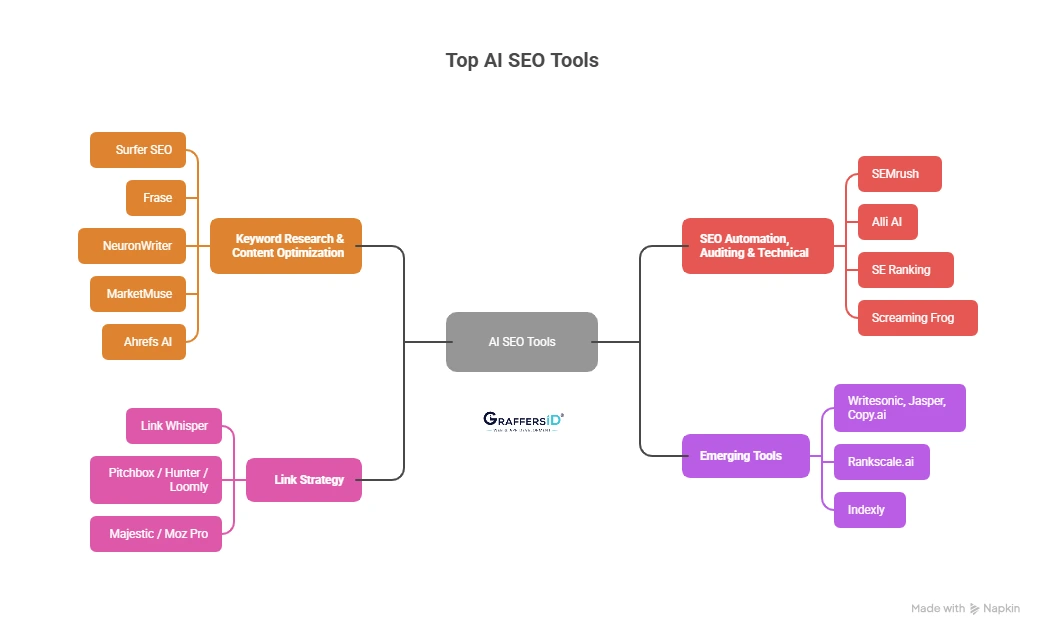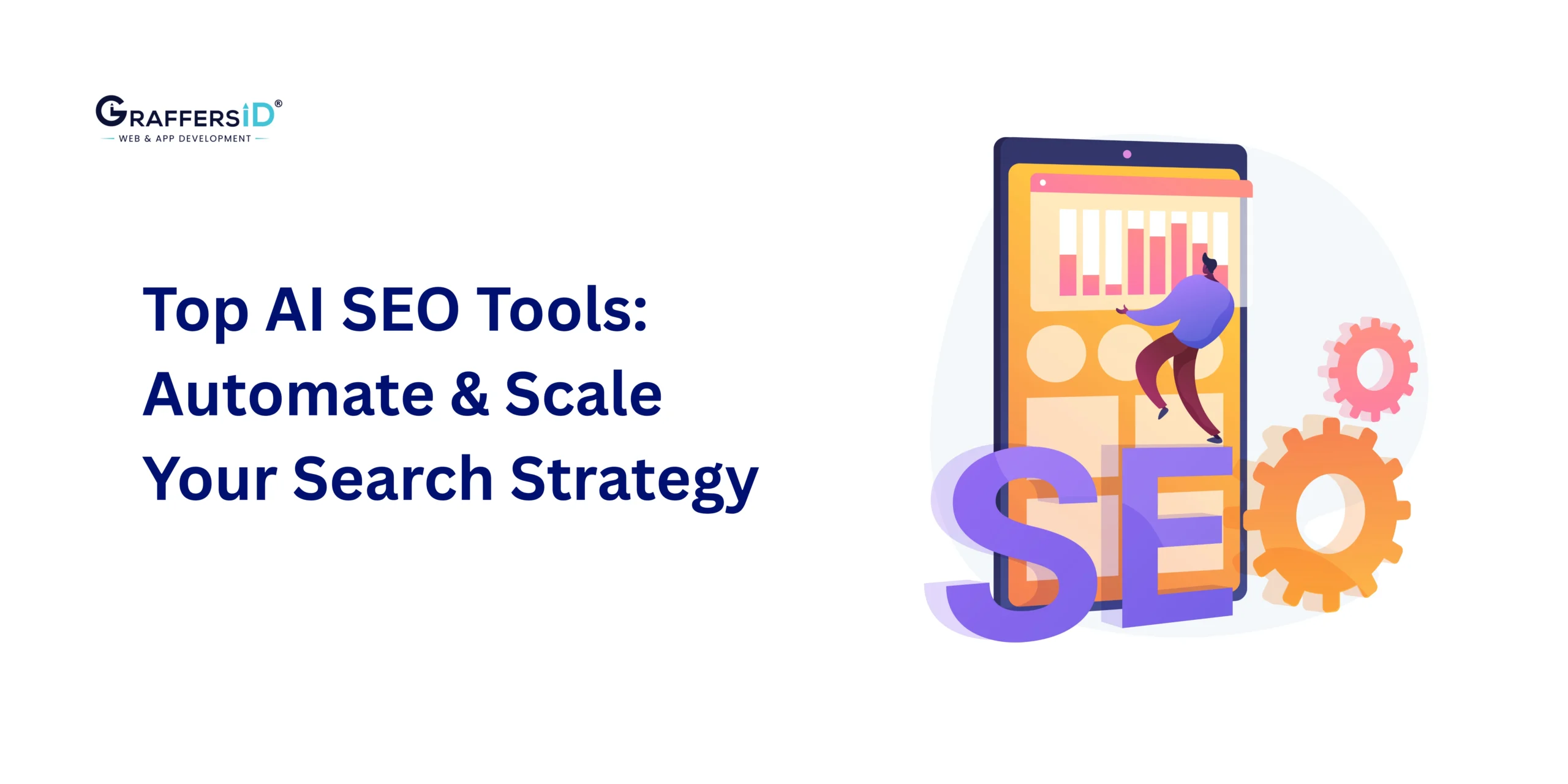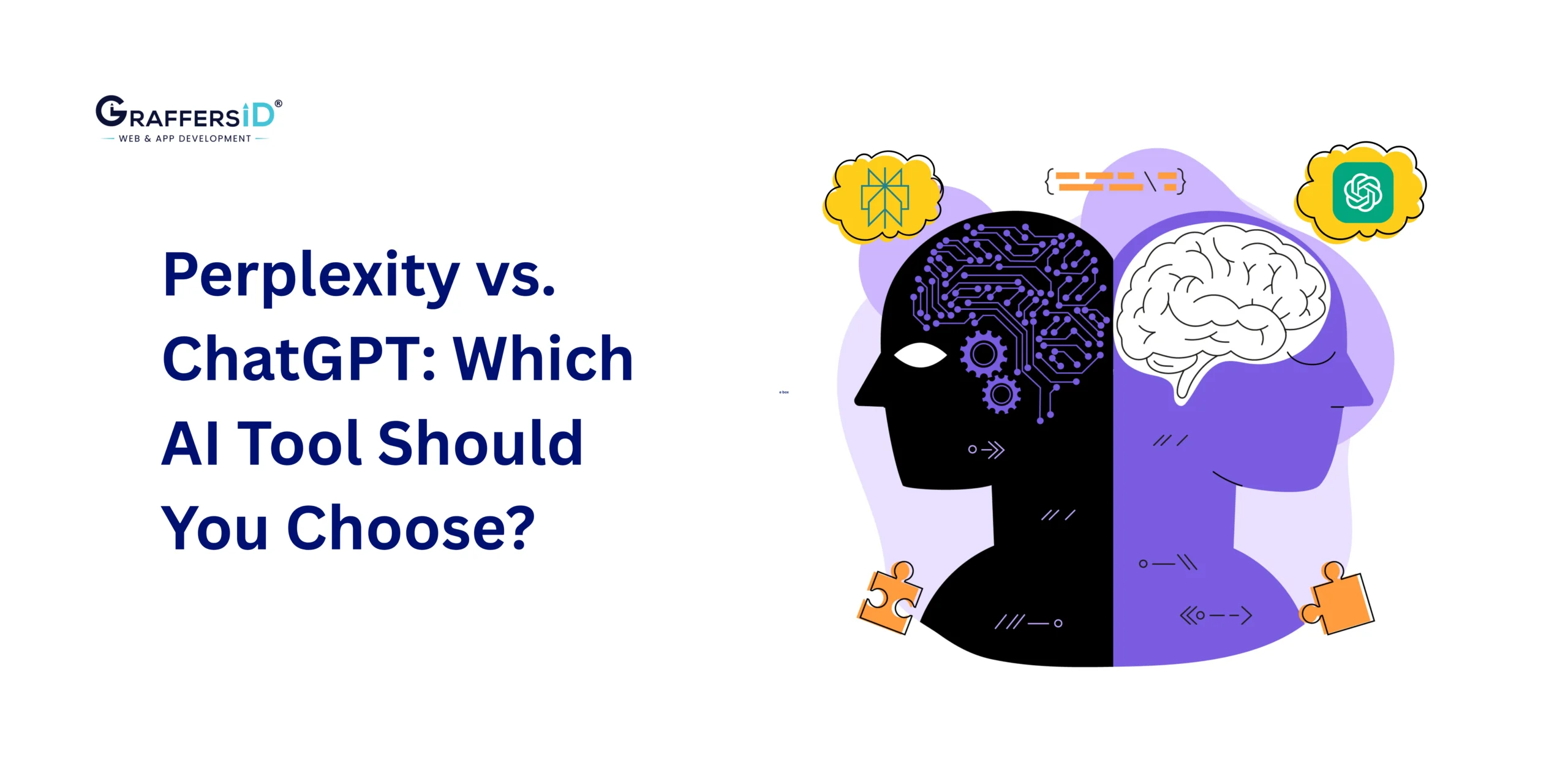In 2026, SEO is changing faster than ever. Search engines are no longer just showing links; they’re answering questions, summarizing content, and highlighting brands directly on the results page. With advanced tools like DeepSeek leading a new wave of AI-powered search, businesses that rely only on traditional SEO tactics are falling behind.
Today, success in digital marketing means more than just ranking high on Google. It’s about showing up in AI-generated answers, optimizing faster with automation, and building content that search engines and users trust.
Whether you’re a CMO, CTO, or SEO professional, using the right tools can help you stay visible, competitive, and efficient in this new era. In this blog, we’ll explore the best AI SEO tools for 2026; what they do, how they help, and how you can use them to future-proof your digital strategy.
SEO Landscape of 2026: What You Need to Know?
Before exploring the tools, it’s important to understand how search is changing in 2026 and why your SEO strategy must adapt:

1. AI Overviews are taking over search results: Google’s new AI Overviews (previously called SGE) now appear for many queries. These AI-generated answers often give users what they need instantly, reducing the number of clicks to websites.
2. Zero-click searches mean less traffic, but more brand opportunities: Because users often find answers directly on Google or AI assistants, focusing only on traffic is outdated. The new goal is visibility; making sure your brand appears inside those AI answers and summaries.
3. “AI visibility” is now a key performance metric: Marketers are tracking when and where their brand or content is mentioned inside AI-generated results; even when there’s no click. Being part of these responses signals strong authority.
4. Search is no longer just on Google: People are searching across multiple platforms; AI assistants (like ChatGPT, Perplexity, and Claude), niche engines, and even inside apps like Notion or LinkedIn. SEO now means optimizing across all these ecosystems.
5. E-E-A-T and brand authority matter more than ever: AI tools rely on trustworthy, expert-backed content. Brands with visible authors, consistent topics, and strong reputations are favored in both search rankings and AI-generated answers.
Top AI SEO Tools to Use in 2026
Below is a categorized, updated list of high-impact AI SEO tools (both new and improved) that you should consider mastering. Each section gives tool highlights, ideal use cases, and things to watch out for:

A. Keyword Research & Content Optimization Tools
In 2026, keyword research isn’t just about finding high-volume terms: it’s about understanding search intent, AI visibility, and content structure that aligns with how users and generative engines read your content.
1. Surfer SEO
Surfer SEO offers detailed on-page recommendations, SERP comparisons, and predictive features to help you structure and optimize your content. Its live editor ensures every piece aligns with ranking pages.
Best for: Real-time on-page optimization
Tip: Surfer doesn’t analyze backlinks deeply, so use it with tools like Ahrefs for complete insights.
2. Frase
Frase combines SEO research, topic analysis, and AI writing to speed up your content creation process. It’s ideal for drafting briefs and identifying what users really want to know. It also helps challenge writers to create engaging, click-worthy article titles—especially when publishing on a guest posting website.
Best for: Quick AI-powered content ideation and outlines
Tip: Always edit AI-written content for grammar and tone; Frase’s free version has limited capabilities.
3. NeuronWriter
NeuronWriter helps you identify long-tail opportunities, internal linking paths, and semantic keyword clusters. It’s especially useful for niche topics and structured content optimization.
Best for: Semantic optimization and long-tail keywords
Tip: The tool has a slight learning curve; double-check AI recommendations before publishing.
4. MarketMuse
MarketMuse uses AI to map your topic coverage and show where your site lacks authority. It’s great for enterprise or content-heavy websites looking to strengthen topical depth.
Best for: Large-scale content planning and topic gap detection
Tip: The advanced features are available in higher-tier plans, so it’s best suited for teams managing multiple pages or blogs.
5. Ahrefs + Ahrefs AI
Ahrefs remains one of the strongest keyword and backlink tools, now enhanced with an AI content assistant. It helps you plan topics, check competition, and optimize outlines using data-backed insights.
Best for: Keyword data and backlink analysis
Tip: The AI assistant is a helper, not a full writer; always include human editing for tone, structure, and E-E-A-T compliance.
In 2026, the winning workflow is no longer just “find keywords → write content.” It’s about building topic clusters, aligning with AI search visibility, and maintaining strong brand authority. These tools make that transition smoother, turning keyword lists into strategic, SEO-ready content systems.
Read More: AI Assistants vs. AI Agents (2026): Key Differences, Features, and Use Cases Explained
B. SEO Automation, Auditing & Technical Tools
In 2026, SEO teams are shifting from manual checks to automated optimization. The right tools now handle repetitive audits, bulk updates, and technical fixes. Below are some of the most effective automation and auditing tools:
1. Wellows
Wellows is the autonomous marketing platform for GenAI that gives teams a live, actionable view of their AI visibility and search performance. Instead of only tracking rankings in Google, Wellows shows how often your brand (and your competitors) are cited inside GenAI platforms like ChatGPT, Gemini, and other AI search engines.
Powered by a dedicated GenAI visibility stack, Wellows translates these brand mentions and citations into an easy-to-track Citation Score, so marketers can quickly see where they’re visible, where competitors are winning, and what to do next. It becomes your single source of truth for brand visibility in GenAI, the place where managers and teams align, set targets, and measure progress.
Best for: SEO and marketing teams at agencies, consultants, freelancers, startups who need reliable AI search visibility reporting alongside traditional SEO metrics.
Tip: Start by adding your brand and top competitors, then use Wellows’ Citation Score trends and visibility reports to set baselines, build KPIs, and create playbooks to close visibility gaps and scale citations over time.
2. SEMrush
SEMrush remains a top choice for comprehensive SEO management. Its AI features help marketers audit websites, track performance, and optimize content based on real-time insights.
Best for: Tracking performance, improving content quality, and maintaining site health.
Tip: SEMrush has a lot of features; start with a few key modules like “Site Audit” and “Content Assistant” to avoid overwhelm.
3. Alli AI
Alli AI focuses on making technical SEO fast and scalable. It automates on-page changes, technical fixes, and link-building efforts; all from one dashboard.
Best for: Agencies and large sites that need to scale updates quickly.
Tip: Automation is powerful but risky. Review every major change before deploying to prevent “SEO noise” or unwanted edits.
4. SE Ranking
SE Ranking is an all-in-one SEO platform that now includes tracking for AI-generated search results (AI Overviews). It combines traditional SEO metrics with visibility insights from generative search engines.
Best for: Teams focusing on both traditional rankings and AI visibility metrics.
Tip: While SE Ranking’s backlink data is growing, combine it with a specialist tool for deeper link analysis.
5. Screaming Frog
Screaming Frog continues to be the go-to tool for technical SEO. With new AI-powered plugins, it can now analyze crawl data more intelligently and surface deeper insights automatically.
Best for: Technical SEO audits, identifying crawl errors, and analyzing large websites.
Tip: The raw data can be complex; use integrations with analytics or visualization tools for clearer insights.
These tools help automate repetitive audits, speed up technical fixes, and track visibility across both Google and AI-powered search engines.
C. Link / Internal & External Strategy Tools
Even in 2026, backlinks remain one of the strongest ranking signals, but their role has evolved. Here’s how to build smarter link strategies using the best tools available today:
1. Link Whisper
Link Whisper automates internal linking, helping you build logical site structures and improve crawl efficiency. It analyzes your content and suggests relevant internal links based on keywords and context.
Best for: Automating internal links, optimizing anchor text, and detecting orphan pages.
Tip: Great for internal linking only; pair it with external outreach tools for a complete strategy. Run it regularly to ensure every new page fits into your site’s link ecosystem.
2. Pitchbox / Hunter / Loomly
These tools simplify link-building outreach by automating prospect discovery, scoring leads, and personalizing emails using AI. They help you identify credible websites and manage campaigns efficiently.
Best for: Outreach automation, prospect qualification, and managing communication workflows.
Tip: While automation saves time, personalization is crucial. Use AI-assisted scoring but customize every outreach message to maintain authenticity and avoid spam filters.
3. Majestic / Moz Pro
Majestic and Moz Pro provide detailed backlink analytics, helping you compare domains, detect spammy links, and understand your link authority. Their AI-powered insights make data interpretation faster and easier.
Best for: Backlink profiling, domain comparison, and spam detection.
Tip: AI add-ons enhance analysis, but the true strength lies in the data. Use these insights to focus on acquiring high-quality backlinks that improve your brand’s credibility across AI and traditional search engines.
In 2026, link building is no longer just about numbers; it’s about relevance, authority, and intelligent structure. These tools help your website earn stronger visibility in both AI-driven results and traditional search rankings.
Read More: AI in Marketing: AI Marketing Platforms, Ethics, Best Practices in 2026
D. Other Emerging Tools
Beyond the above popular AI SEO platforms, several new and specialized tools are gaining attention in 2026. These tools are shaping how marketers manage optimization, content, and visibility across search and AI-driven platforms. Here are some you can consider:
1. Writesonic, Jasper, and Copy.ai: These AI writing assistants help create high-quality content drafts, meta descriptions, and topic variations in minutes. When integrated with SEO tools, they can also suggest keywords, tone improvements, and content gaps, helping teams scale content creation efficiently.
2. Rankscale.ai: An AI tool that predicts rankings by analyzing search intent, competition, and engagement signals. It’s useful for marketers who want a more data-driven forecast of how specific content updates might impact visibility.
3. Indexly: A tool for monitoring how your content is indexed across Google and AI search engines. As generative AI systems pull from diverse sources, keeping your pages properly indexed and updated is key to maintaining visibility.
These emerging tools show where SEO is heading; keeping up with these platforms will help brands stay competitive as search expands beyond Google into AI-powered ecosystems.
Conclusion
SEO in 2026 isn’t about chasing keywords or manually optimizing every page; it’s about building smarter, scalable systems that adapt to how search and AI engines work. The real winners will be those who combine AI automation with human creativity, using data-driven insights to strengthen brand trust, visibility, and content performance.
By using the right AI SEO tools, tracking how your brand appears in AI answers and overviews, and structuring content for both users and algorithms, you can stay visible and competitive no matter how search evolves.
At GraffersID, we help businesses go beyond traditional SEO by providing AI-ready remote developers who can automate workflows, integrate intelligent tools, and build custom solutions that drive measurable growth.
Partner with GraffersID to future-proof your AI strategy and turn AI-driven optimization into your brand’s competitive edge. Hire expert AI developers today!




